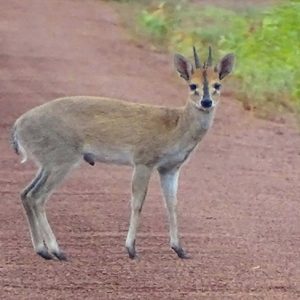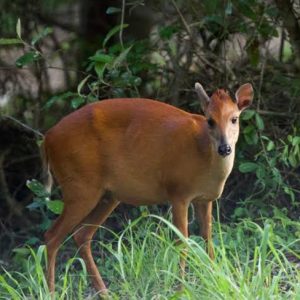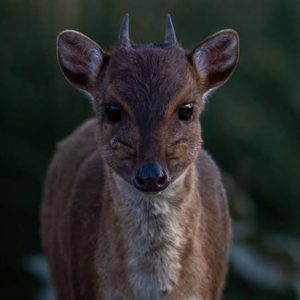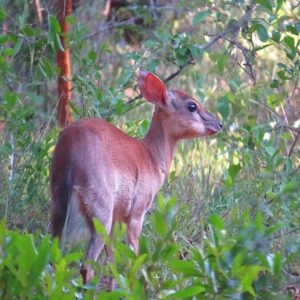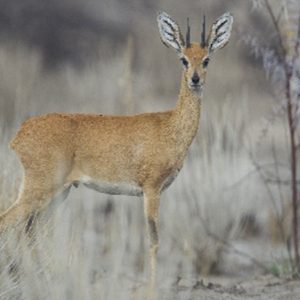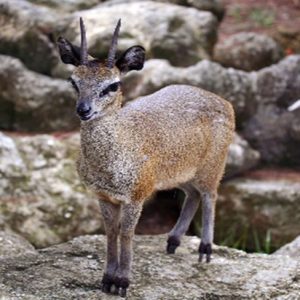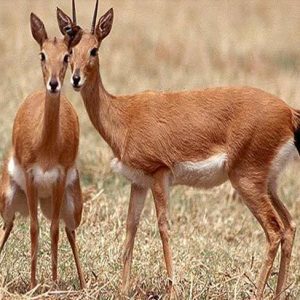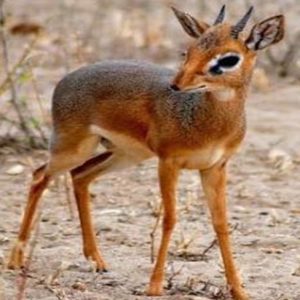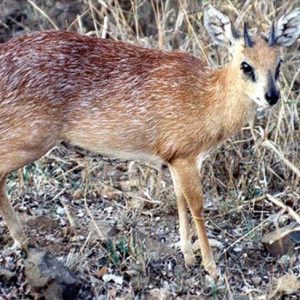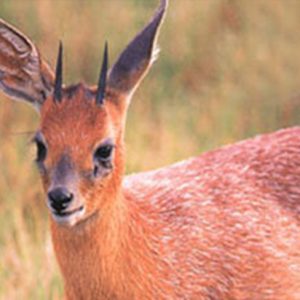Hunting the Tiny Ten species in Southern Africa is a great accomplishment for any ethical hunter. Although they are Africa’s smallest antelope they can amount to a lot of hours of hard hunting, patiently stalking through, either, very thick coastal sand forests, savannah thornveld or even dry desert like areas.
In the province of KwaZulu-Natal we are lucky enough to have six of these species available, being Grey Duiker, Red Duiker, Blue Duiker, Livingstone’s Suni, Steenbok and Oribi.
For dik-dik we travel to Namibia for the Damara dik-dik and to Tanzania for the Kirk’s dik-dik. The Sharpes Grysbok occur in our Limpopo province and the Cape Grysbok in the Western and Eastern Cape.
For hunting the smaller of these species we usually recommend using a large calibre, such as a 375H+H, with a solid bullet at low velocity, to reduce trophy damage.
A low power scope, preferably with a red dot, is critical as most of these animals will be hunted in very dense bush.
Grey Duiker (Sylvicapra grimmia)
This is the biggest of the three duiker. He is generally found in all parts of Africa. The grey duiker is usually a solitary animal, but pair up during rutting. Only the male has horns.
Red Duiker (Cephalophus natalensis)
The red duiker is commonly found close to our coast in thick sand forest bush. Often occur in pairs and in early mornings or late afternoons they will venture out onto open roads. Both sexes have horns.
Blue Duiker (Philantomba monticola)
The blue duiker is the smallest of the duikers. Both male and female have horns. The females are usually bigger than the males. Like the Suni and the Red duiker they also live along thick coastal bush.
Livingstone Suni (Neotragus moschatus)
The Suni lives in dense underbrush and is found from KZN all the way up into Kenya, and even occurs on the island of Zanzibar. They are tiny animals and the male weights a mere 5kg. Only the male has horns.
Steenbok (Rahpicerus campestris)
The Steenbok is a small animal that weighs around 11kg. Reddish in colour with white under belly. Only the males carry horns. They occur in open grasslands as well as dry arid areas, and very often seen in pairs.
Klipspringer (Oreotragus oreotragus)
The name klipspringer is the Afrikaans name meaning Rock Jumper. They often occur in pairs and live amoung steep rock faces. They are extremely agile over rocks. A male would weigh in the region of 13kg. Only the males has horns.
Oribi (Ourebia ourebia)
The Oribi is similar in appearance to the Steenbok, but just a bit bigger. They live in open mountainous grasslands, and live in pairs. Only the male has horns.
Dik-Dik (Madoqua kirkii)
The male dik-dik is smaller than the females. Only the male has horns. Damara dik-dik are found in Namibia, while the Kirk’s dik-dik are found along the masai steppe in Tanzania. Both live in dry arid terrain.
Sharpes Grysbok (Raphicerus sharpei)
The Sharpes Grysbok is smaller than the Cape Grysbok. A male usually weighs around 8kg and only the male has horns. They are found in the Limpopo province of Southern Africa.
Pricing
Hunting the tiny ten are priced according to the pricelist on the website. Please note different properties in different provinces can have major price differences. That will be quoted in writing and discussed with the hunter well in advance.

